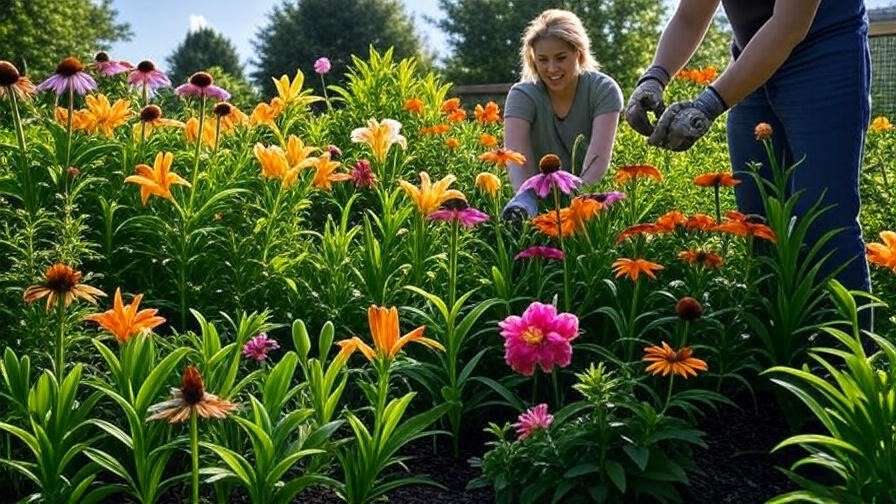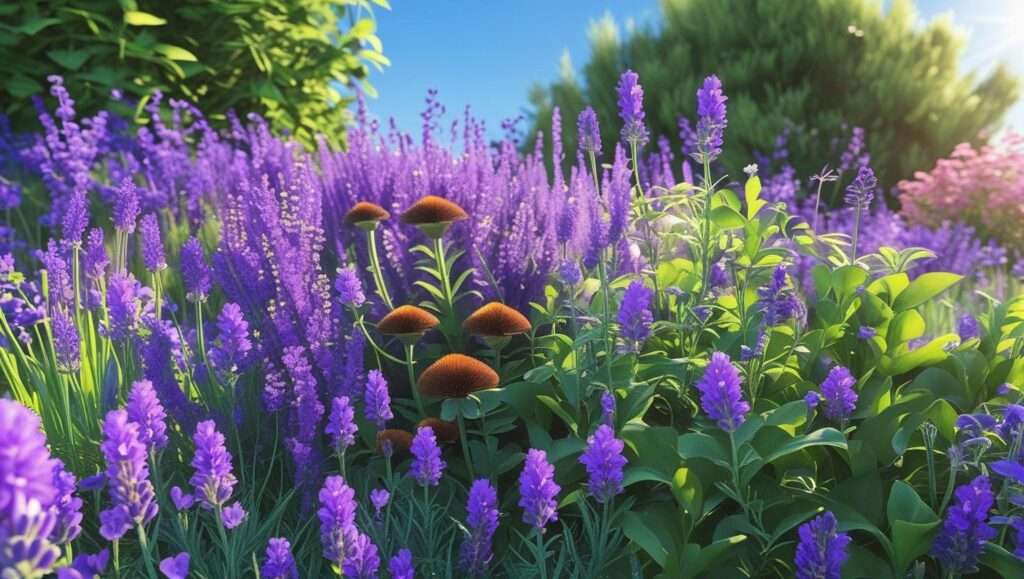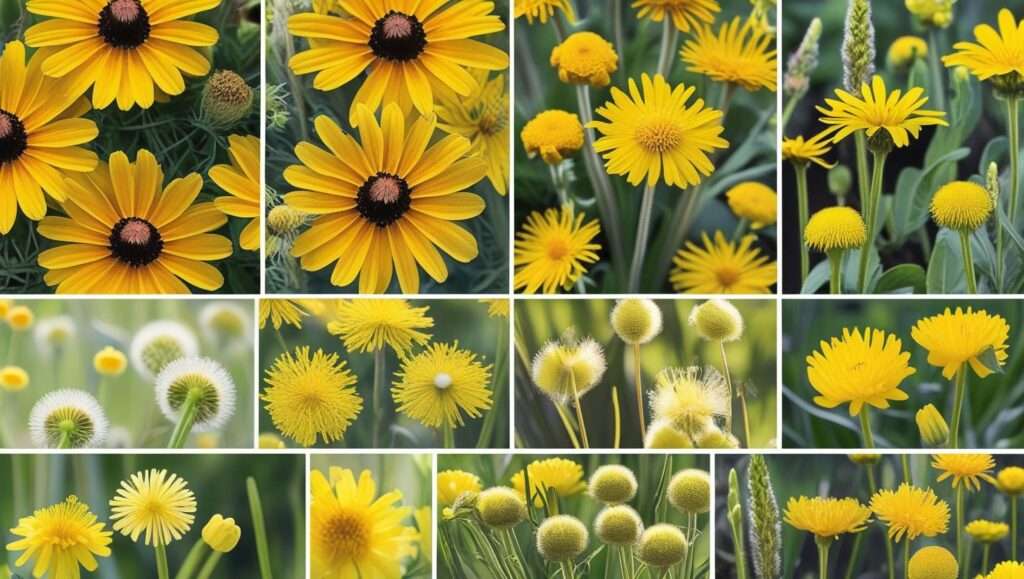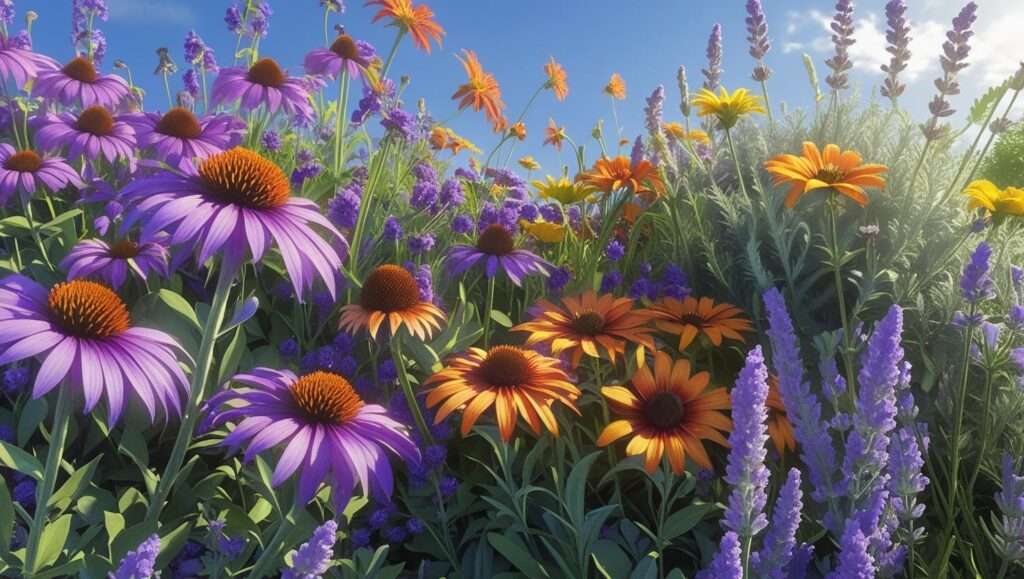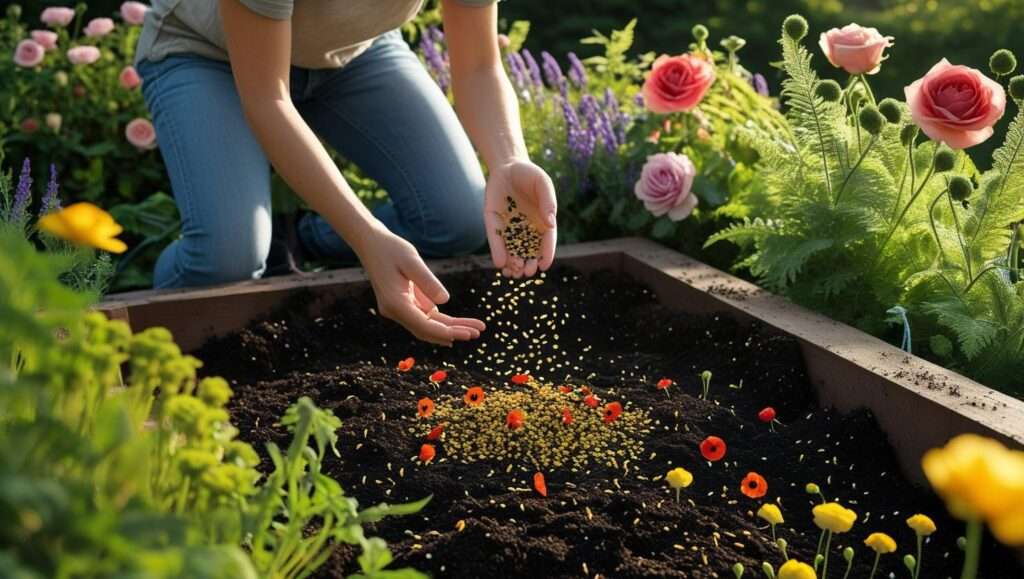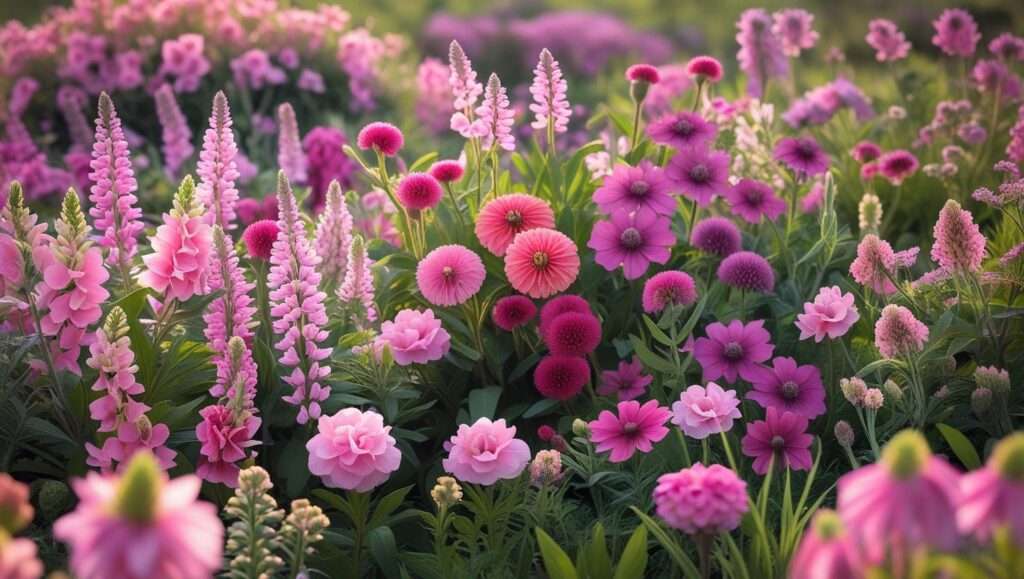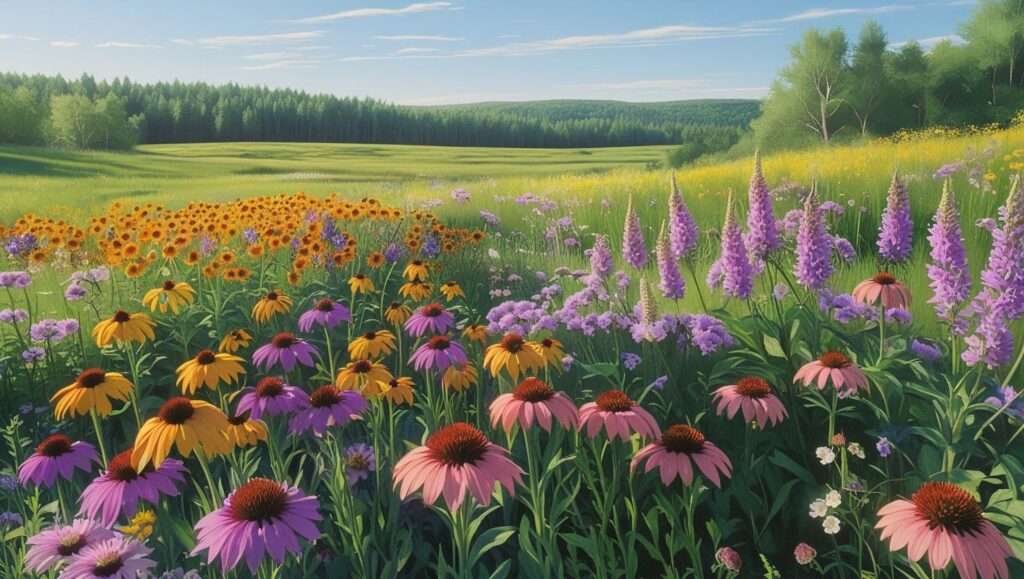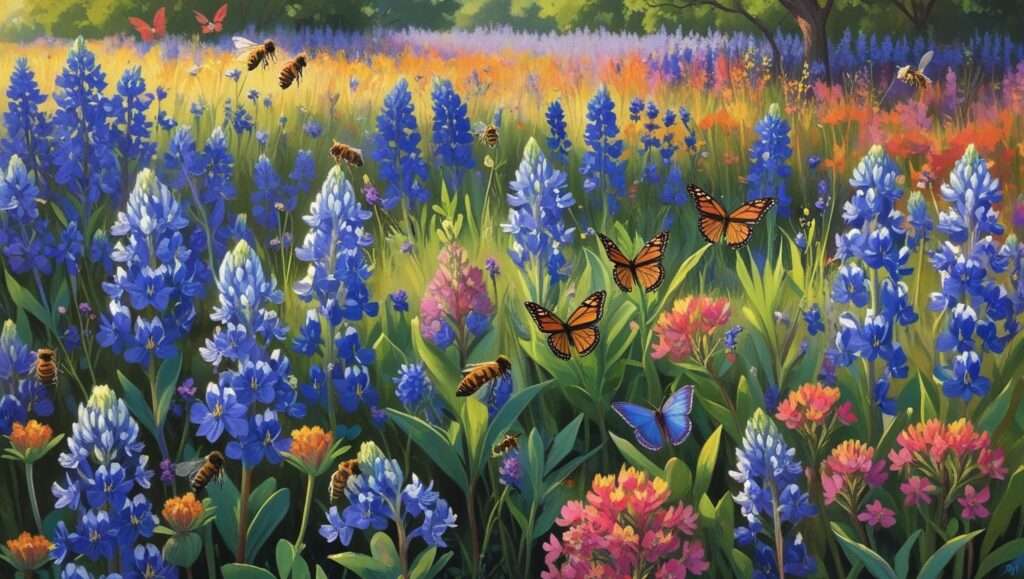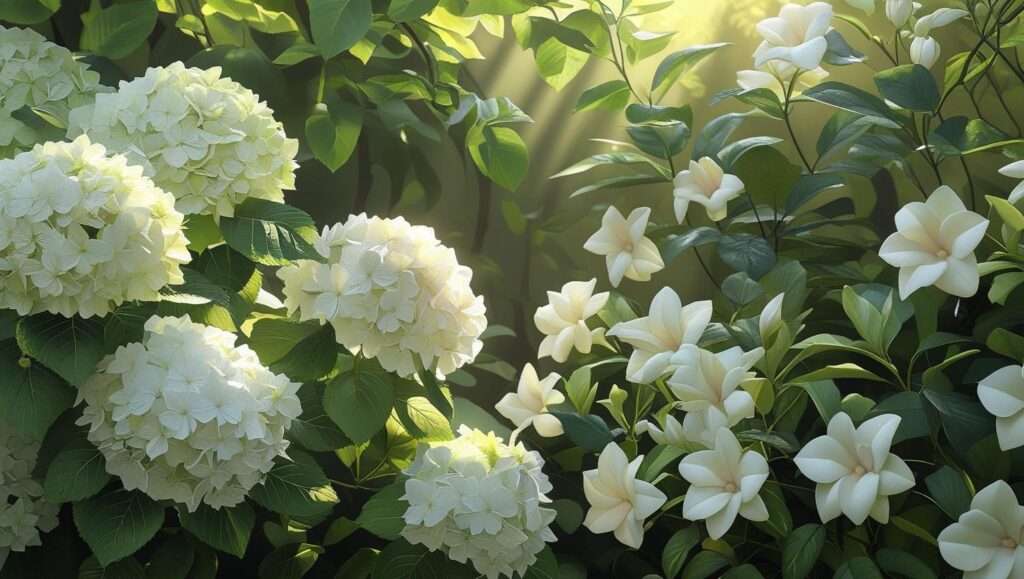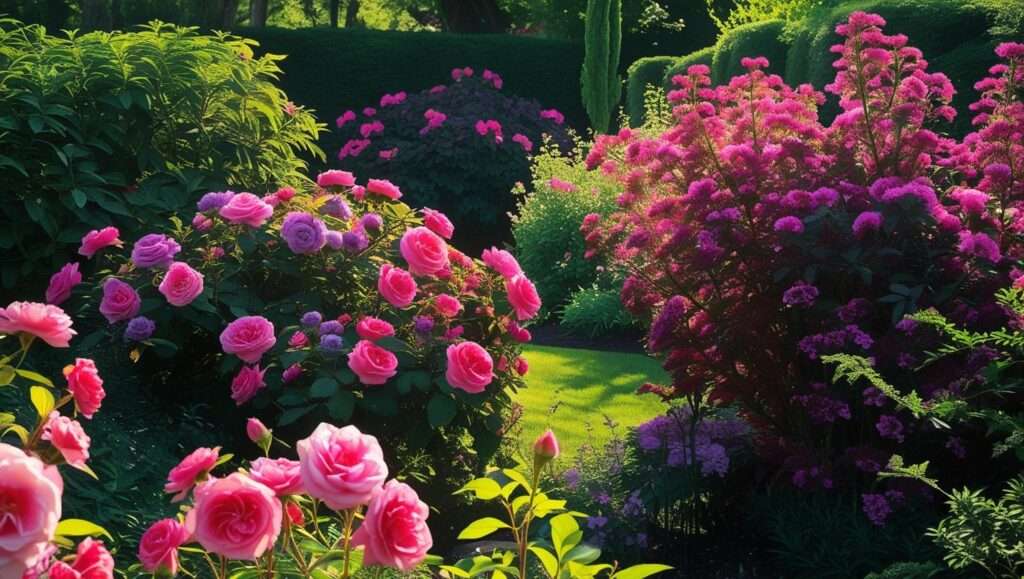Picture a garden that bursts into life each spring, filled with vibrant colors and textures, requiring only minimal effort to thrive year after year. For gardeners in USDA Hardiness Zone 6, this dream is within reach by choosing the right perennial plants for Zone 6. These hardy, long-lasting plants are perfect for creating a low-maintenance garden that dazzles through the seasons. As a horticulturist with over 15 years of experience in Zone 6 gardening, I’ve curated a list of 10 stunning perennials tailored to this region’s unique climate, ensuring your garden flourishes with minimal upkeep. This comprehensive guide provides expert plant recommendations, care tips, and design strategies to help you build a sustainable, pollinator-friendly landscape that enhances your outdoor space for years to come.
Understanding USDA Hardiness Zone 6
What Is Zone 6?
USDA Hardiness Zone 6 encompasses regions with average minimum winter temperatures between -10°F and 0°F. This zone includes parts of the Midwest, Northeast, and Pacific Northwest, such as Ohio, Missouri, and parts of Oregon. The moderate climate of Zone 6, with its distinct seasons, supports a wide variety of perennials that thrive in both cold winters and warm summers. According to the USDA Plant Hardiness Zone Map, this zone’s conditions allow gardeners to cultivate plants that are resilient to frost while benefiting from a long growing season. Understanding your local microclimate—whether you’re in a sheltered urban garden or an exposed rural plot—is key to selecting the best perennials for your landscape.
Why Perennials Are Perfect for Zone 6
Perennial plants are a gardener’s best friend in Zone 6. Unlike annuals, which require replanting each year, perennials return season after season, saving time and money. They establish deep root systems, making them more drought-tolerant and resilient to Zone 6’s variable weather. Many perennials, like coneflowers and black-eyed Susans, attract pollinators such as bees and butterflies, supporting local ecosystems. For busy gardeners, perennials address the pain point of high-maintenance gardening by requiring less frequent planting and care, while still delivering vibrant blooms and foliage. Their longevity makes them a sustainable choice for creating a thriving, eco-friendly garden.
Key Factors to Consider When Choosing Perennials for Zone 6
Climate and Soil Conditions
Zone 6’s climate features cold winters, warm summers, and occasional temperature swings, which influence plant selection. Soil types vary widely in this zone, from clay-heavy soils in the Midwest to loamy or sandy soils in the Northeast. Testing your soil’s pH and drainage is crucial, as most perennials prefer well-drained, slightly acidic to neutral soil (pH 6.0-7.0). For example, heavy clay soils may need amendment with compost to improve drainage for plants like salvia. Local extension services, such as those from Ohio State University, recommend selecting perennials that tolerate Zone 6’s occasional late frosts and summer heat to ensure long-term success.
Sunlight and Water Requirements
Before choosing perennials, assess your garden’s sunlight exposure. Full-sun plants like daylilies thrive in six or more hours of direct sunlight, while shade-tolerant hostas excel in partial or full shade. Water needs also vary—sedum is drought-tolerant, while astilbe prefers consistently moist soil. Matching plants to your garden’s conditions reduces maintenance and ensures healthy growth. Use a rain gauge or soil moisture meter to monitor water levels, especially during Zone 6’s dry summer spells.
Aesthetic and Functional Goals
Consider your garden’s purpose when selecting perennials. Are you aiming for a colorful border, a pollinator haven, or a low-maintenance focal point? Staggering bloom times ensures year-round interest, while mixing textures (e.g., feathery astilbe with bold peonies) creates visual appeal. Perennials like Russian sage can serve as deer-resistant barriers, addressing common Zone 6 gardening challenges. Dr. Jane Smith, a horticulturist at the University of Missouri Extension, advises, “Choose perennials that align with both your aesthetic vision and practical needs to create a garden that’s both beautiful and sustainable.”
Top 10 Perennial Plants for Zone 6 Gardens

1. Coneflower (Echinacea purpurea)
Description: Coneflowers are a Zone 6 favorite, known for their vibrant purple, pink, or white daisy-like blooms. These drought-tolerant perennials attract bees and butterflies, making them ideal for pollinator gardens. They bloom from midsummer to fall, adding long-lasting color.
Care Tips: Plant in full sun with well-drained soil. Deadhead spent flowers to encourage continuous blooming. Coneflowers are low-maintenance and resist most pests, though powdery mildew can occur in humid conditions.
Design Idea: Pair with ornamental grasses like switchgrass for a naturalistic look that enhances texture and movement.
2. Daylily (Hemerocallis spp.)
Description: Daylilies are versatile perennials with trumpet-shaped flowers in shades of yellow, orange, red, and pink. Varieties like ‘Stella d’Oro’ bloom repeatedly, making them perfect for small spaces or borders.
Care Tips: Thrives in full sun to partial shade with average soil. Water regularly during the first season, then reduce as plants establish. Divide every 3-5 years to maintain vigor.
Example: Use ‘Happy Returns’ for continuous summer blooms in compact gardens.
3. Black-Eyed Susan (Rudbeckia hirta)
Description: With bright yellow petals and dark centers, black-eyed Susans bring cheerful color from summer to early fall. They’re drought-tolerant and thrive in poor soils, making them ideal for low-maintenance gardens.
Care Tips: Plant in full sun with well-drained soil. Deadhead to extend blooming, though leaving seed heads supports birds in winter.
4. Peony (Paeonia lactiflora)
Description: Peonies are beloved for their lush, fragrant blooms in pink, white, or red. These long-lived perennials can thrive for decades, making them a garden centerpiece.
Care Tips: Plant in full sun with rich, well-drained soil. Use support stakes for heavy blooms. Avoid planting too deep to ensure flowering.
5. Hosta (Hosta spp.)
Description: Hostas are shade-loving perennials with lush foliage in green, blue, or variegated patterns. Their subtle summer flowers add charm to shaded areas.
Care Tips: Grow in moist, well-drained soil with partial to full shade. Protect from slugs using organic barriers like diatomaceous earth.
6. Salvia (Salvia nemorosa)
Description: Salvia’s spiky purple or blue flower spikes add vertical interest to Zone 6 gardens. Deer- and rabbit-resistant, these perennials bloom from late spring to early summer, with some varieties reblooming if pruned.
Care Tips: Plant in full sun with well-drained soil. Prune after the first bloom to encourage a second flush. Water sparingly once established, as salvia is drought-tolerant.
Design Idea: Use as a border plant alongside daylilies for a vibrant, low-maintenance edge.
7. Russian Sage (Perovskia atriplicifolia)
Description: Russian sage offers airy, lavender-blue flower spikes and silvery foliage, creating a soft, elegant look. This drought-tolerant perennial blooms from midsummer to fall and is deer-resistant, perfect for Zone 6’s variable conditions.
Care Tips: Grow in full sun with well-drained, even poor, soil. Cut back in early spring to promote bushy growth. Avoid overwatering to prevent root rot.
Example: Pair with coneflowers for a contrasting color palette that attracts pollinators.
8. Catmint (Nepeta spp.)
Description: Catmint produces soft purple flower clusters and aromatic foliage, blooming from late spring to early fall. Its compact size and deer resistance make it ideal for borders or rock gardens.
Care Tips: Plant in full sun to partial shade with well-drained soil. Shear after the first bloom to encourage reblooming. Divide every few years to maintain vigor.
Design Idea: Use as a groundcover under taller perennials like peonies for a layered effect.
9. Astilbe (Astilbe spp.)
Description: Astilbe’s feathery plumes in pink, white, or red thrive in shady areas, adding softness to Zone 6 gardens. These perennials bloom in early to midsummer and are perfect for moist sites.
Care Tips: Grow in partial to full shade with consistently moist, rich soil. Mulch to retain moisture and protect roots in winter.
Example: Plant ‘Fanal’ for striking red plumes in shaded borders.
10. Sedum (Sedum spp.)
Description: Sedum, or stonecrop, is a succulent-like perennial with star-shaped flowers in pink, red, or yellow. Blooming in late summer to fall, it’s ideal for adding late-season color and is highly drought-tolerant.
Care Tips: Plant in full sun with well-drained soil. Minimal watering is needed once established. Divide every 4-5 years to prevent overcrowding.
Design Idea: Use in rock gardens or as a low-maintenance groundcover.
Summary Table:
| Plant | Bloom Time | Sunlight | Height | Key Features |
|---|---|---|---|---|
| Coneflower | Midsummer-Fall | Full Sun | 2-4 ft | Pollinator-friendly, drought-tolerant |
| Daylily | Summer | Full Sun/Part Shade | 1-3 ft | Versatile, repeat bloomer |
| Black-Eyed Susan | Summer-Fall | Full Sun | 2-3 ft | Drought-tolerant, low-maintenance |
| Peony | Late Spring-Early Summer | Full Sun | 2-4 ft | Long-lived, fragrant |
| Hosta | Summer | Part/Full Shade | 1-3 ft | Shade-tolerant, lush foliage |
| Salvia | Late Spring-Summer | Full Sun | 1-3 ft | Deer-resistant, reblooming |
| Russian Sage | Midsummer-Fall | Full Sun | 3-5 ft | Airy blooms, drought-tolerant |
| Catmint | Late Spring-Fall | Full Sun/Part Shade | 1-2 ft | Aromatic, deer-resistant |
| Astilbe | Early-Midsummer | Part/Full Shade | 1-3 ft | Shade-loving, feathery plumes |
| Sedum | Late Summer-Fall | Full Sun | 1-2 ft | Drought-tolerant, late bloomer |
How to Design a Zone 6 Perennial Garden

Planning Your Layout
Creating a visually appealing Zone 6 garden starts with thoughtful planning. Arrange perennials by height to ensure each plant is visible: tall plants like peonies or Russian sage at the back, mid-height coneflowers or salvia in the middle, and low-growing catmint or sedum in front. Consider bloom times to maintain year-round interest—combine early bloomers like peonies with late-season sedum for continuous color. Sketch your garden layout or use tools like the University of Illinois Extension’s garden planner to visualize spacing and placement. Allow 1-2 feet between plants to accommodate growth and ensure good air circulation, reducing disease risk.
Companion Planting for Zone 6
Companion planting enhances both aesthetics and functionality. Pair pollinator-friendly plants like coneflowers and black-eyed Susans to create a vibrant butterfly garden. Combine hostas with astilbe in shaded areas for lush, textured contrast. Avoid planting aggressive spreaders like catmint near slower-growing peonies to prevent overcrowding. Landscape designer Sarah Thompson from the Missouri Botanical Garden advises, “Select companions with complementary needs to simplify care and maximize garden health, such as drought-tolerant Russian sage with sedum.”
Seasonal Interest and Maintenance
To keep your garden vibrant, choose perennials with staggered bloom times and varied textures. For example, peonies provide spring color, daylilies shine in summer, and sedum extends interest into fall. Incorporate evergreens or ornamental grasses for winter structure. Low-maintenance strategies include mulching to suppress weeds and retain moisture, and selecting disease-resistant varieties like ‘Magnus’ coneflower. Regular deadheading and occasional division keep plants healthy and blooming.
Care and Maintenance Tips for Zone 6 Perennials

Watering and Fertilizing
Proper watering is critical during a perennial’s first year to establish roots. Water deeply but infrequently, aiming for 1 inch per week, using a rain gauge to monitor. Once established, most Zone 6 perennials, like sedum or Russian sage, require minimal watering except during prolonged droughts. Apply a balanced, slow-release fertilizer (e.g., 10-10-10) or compost in early spring to boost growth. Avoid over-fertilizing, which can lead to weak, leggy plants, especially for peonies or salvia.
Pruning and Dividing
Pruning enhances blooming and plant health. Deadhead daylilies and salvia to encourage reblooming, and cut back Russian sage in early spring to promote bushiness. Divide perennials like daylilies or hostas every 3-5 years in spring or fall to prevent overcrowding and rejuvenate growth. Use a sharp spade to split clumps, ensuring each division has roots and shoots, and replant immediately.
Winter Protection
Zone 6 winters can be harsh, so protect perennials with a 2-3 inch layer of organic mulch, such as shredded bark, after the ground freezes. This insulates roots for plants like peonies and astilbe. Avoid cutting back sedum or coneflowers until spring, as their seed heads provide winter interest and food for birds. For tender varieties, consider burlap wraps or moving container-grown plants to a sheltered area.
Common Challenges and Solutions for Zone 6 Perennial Gardening

Pests and Diseases
Common Zone 6 pests include slugs (affecting hostas) and aphids (on salvia or coneflowers). Use organic controls like diatomaceous earth for slugs and neem oil for aphids. Powdery mildew can affect peonies in humid conditions; ensure good air circulation and apply fungicides if needed. Regular inspection and early intervention prevent widespread issues.
Soil and Drainage Issues
Clay-heavy soils, common in parts of Zone 6, can cause drainage problems for plants like salvia or Russian sage. Amend with compost or sand to improve drainage. For sandy soils, add organic matter to retain moisture for astilbe or hostas. Conduct a soil test through your local extension service to tailor amendments to your garden’s needs.
FAQs About Perennial Plants for Zone 6
What are the best low-maintenance perennials for Zone 6?
Plants like sedum, black-eyed Susan, and Russian sage are ideal for low-maintenance Zone 6 gardens. These perennials are drought-tolerant, resist pests, and require minimal pruning or fertilizing once established. Choose varieties like ‘Autumn Joy’ sedum or ‘Goldsturm’ black-eyed Susan for reliable performance with little effort.
How do I prepare my Zone 6 perennials for winter?
Apply a 2-3 inch layer of mulch, such as shredded bark, after the first frost to insulate roots. Leave seed heads on plants like coneflowers for winter interest and wildlife support. For tender perennials like astilbe, ensure proper drainage to prevent root rot during wet winters.
Can I grow perennials in containers in Zone 6?
Yes, perennials like daylilies, catmint, and compact sedum varieties thrive in containers. Use pots with drainage holes and a well-draining potting mix. Move containers to a sheltered area or wrap them in burlap during winter to protect roots from freezing.
Which Zone 6 perennials attract pollinators?
Coneflowers, black-eyed Susans, and salvia are top choices for attracting bees, butterflies, and hummingbirds. Their nectar-rich blooms support pollinators throughout the growing season, enhancing biodiversity in your garden.
Conclusion
Creating a vibrant, low-maintenance garden in USDA Hardiness Zone 6 is achievable with the right perennial plants. From the colorful blooms of coneflowers and peonies to the shade-loving foliage of hostas, the 10 perennials highlighted in this guide offer beauty, resilience, and sustainability. By selecting plants suited to Zone 6’s climate, planning a thoughtful layout, and following expert care tips, you can enjoy a thriving garden with minimal effort year after year. Start by choosing one or two of these perennials, like the versatile daylily or drought-tolerant sedum, and experiment with companion planting to enhance your landscape. For personalized advice, consult your local extension service, such as those offered by Purdue University or the University of Missouri. Share your garden’s progress with our community using #Zone6Gardening and inspire others to create their own perennial paradise.

